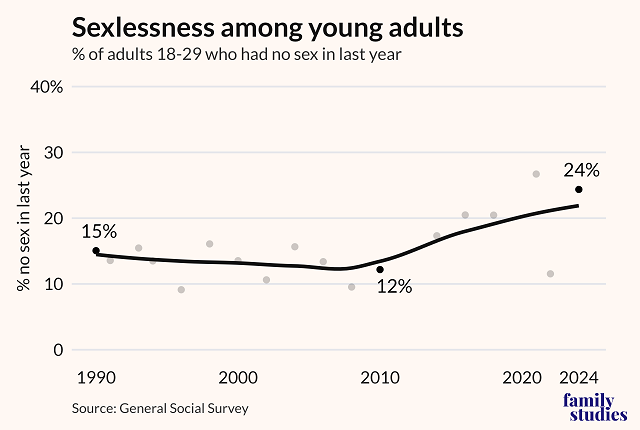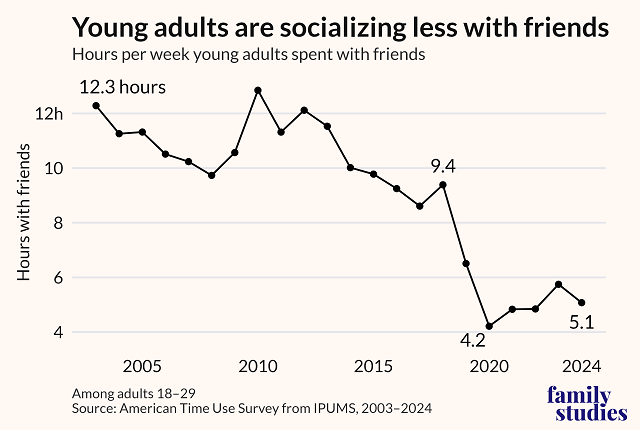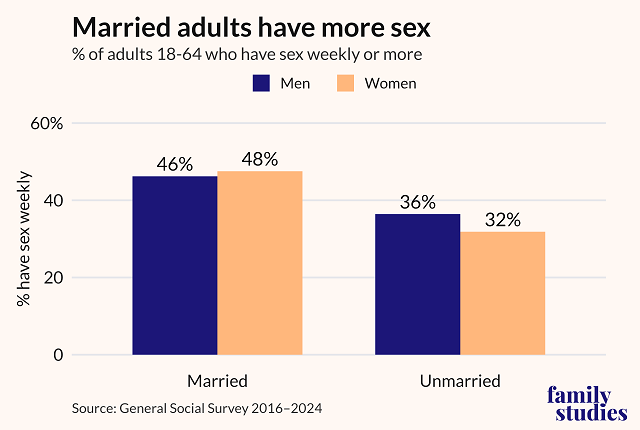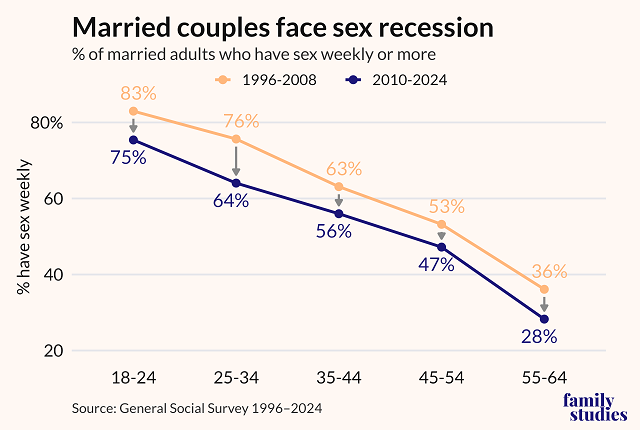Comments




- Married adults have markedly more sex than their unmarried peers, but the sex recession is also making inroads among married couples.
- When it comes to sexlessness (“no sex in the last year”) among young adults, the biggest change comes post-2010.
- Between 2010 and 2019, the average time young adults spent with friends in a given week fell by nearly 50%, from 12.8 hours to just 6.5 hours.
Source: Institute for Family Studies.


According to Source Watch, The Institute for Family Studies (IFS) is
I don’t entirely understand how this fits their agenda (I would expect a “married heterosexuals are having more sex” narrative), and am not surprised by the results, but also don’t really trust the source.
If they are earnest in their goals, I would hope for honest reporting for others to campaign around, plan for, or invest in. People interested in doing projects that I disagree with can still produce good data (though I agree we should look for missing data, for eg).
Surface level, this looks like a standardized survey they’ve used for decades? Could someone confirm the questions haven’t changed much and the data collection is sane?